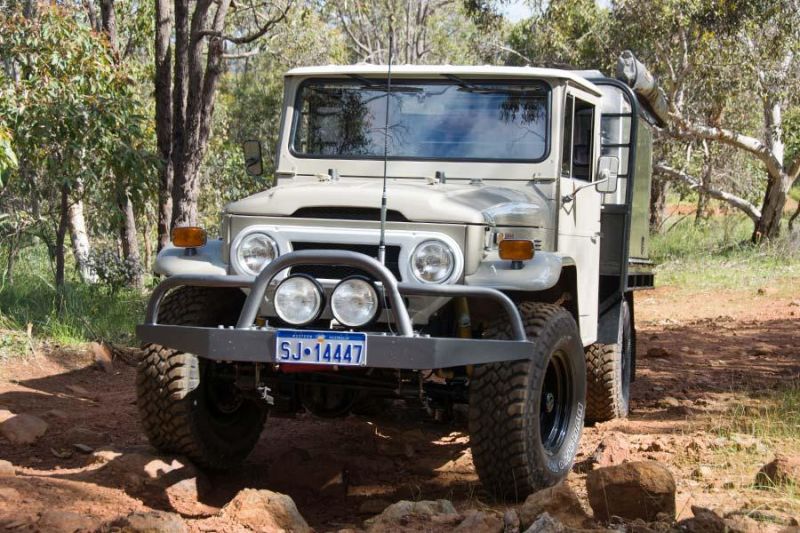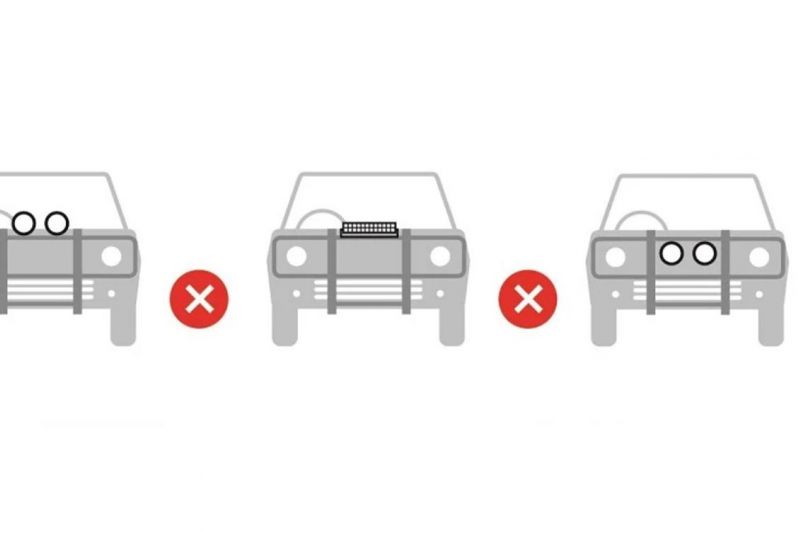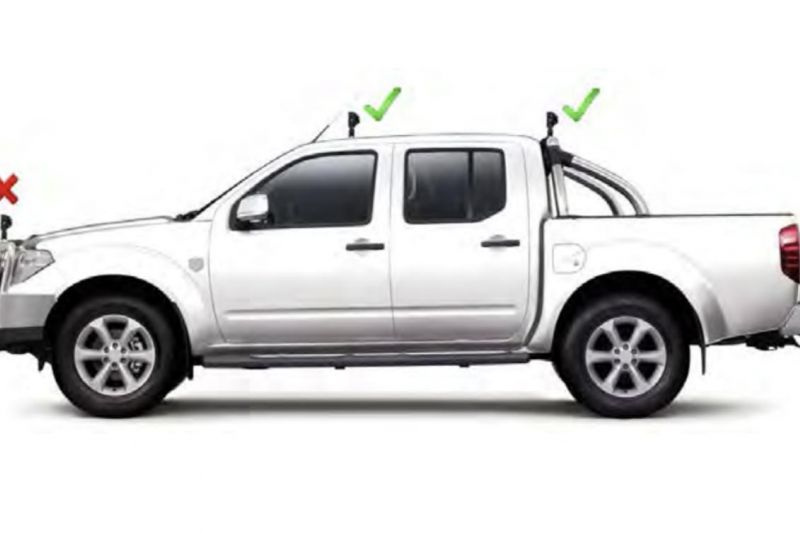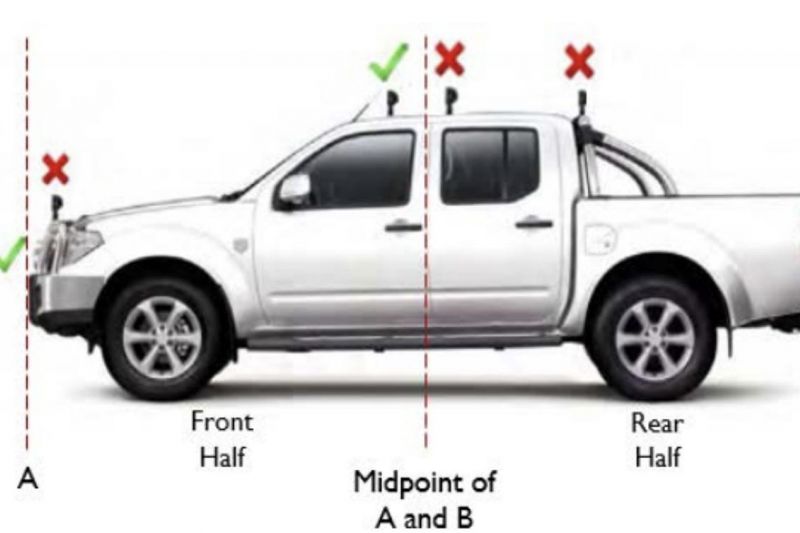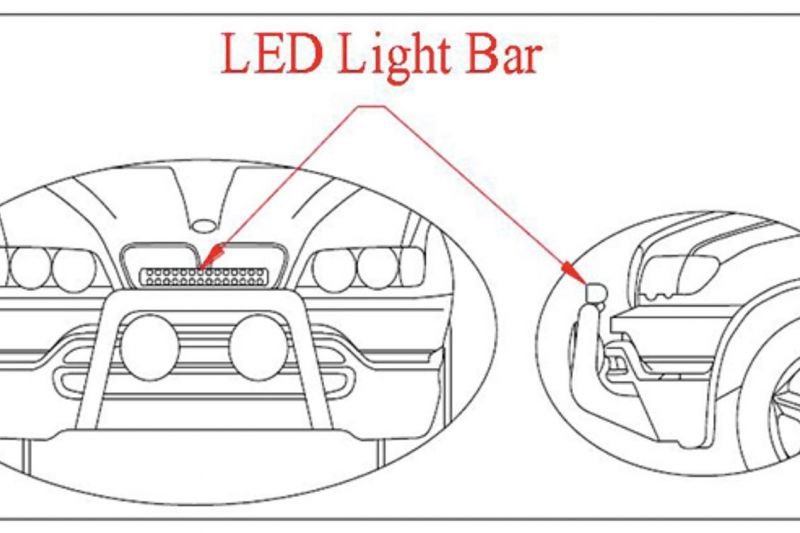Adding a light bar, spot lights or driving lights to a vehicle can be one of the best, most affordable and most effective ways to improve the safety of the vehicle.
- Adding extra lights to your vehicle is a good idea in principle
- But in practice, there are confusing laws and rules around adding lights to a vehicle
- Some laws vary by state – and remember, if you cross a border, you must comply with the local rules
Seeing better at night, or in adverse weather conditions, is arguably the most effective way to avoid an accident – being able to better see the road, track, or highway ahead can be the difference between a memorable trip, and a forgettable one.
So what are the laws around adding lights to your vehicle? For the purpose of this piece, we’re talking about additional driving lights – meaning, any mounted lighting systems that are forward-facing, like LED light bars, spot lights, driving lights and so on.
Take note, though – the states and territories of Australia have different takes and interpretations on what is considered legal and/or safe when it comes to additional lighting on vehicles, so things can be a bit confusing.
And also, if you head off on an epic trip and you have lights fitted that are legal in your state, they might not be across the border. So travel safely.
The Australian Design Rules (ADRs) that apply to this topic is ADR 13/00, “Installation of Lighting and Light Signalling Devices on other than L-Group Vehicles 2005”. If you’re wondering, L-Group vehicles are two- or three-wheelers – motorcycles, scooters, mopeds, sidecar bikes etc.
That ADR is constantly being amended, which makes things difficult – but the most recent published changes were in February 2023. Honestly, you’d have to be an engineer or a bureaucrat (or both) to get your head around the documentation, but we’ve aimed to make it simple for you to see where you can or can’t fit lighting, depending on where your vehicle is in Australia.
However, just note that, according to Access Canberra – the ACT government’s legible take on things – the above ADR aligns “vehicle safety standards to the international standards of a maximum of four additional lamps, removing the former requirements of lights in pairs of two or four”.
Light-bars are considered a single light, so long as all of the LEDs operate together. If the bar can operate different sections independently (indicators/blinkers, for instance), each section is considered a separate lamp. Further, it is stipulated that any additional lamps must be able to be switched off while the high-beam headlamps are operating and must automatically turn off when the vehicle’s high-beam headlamps are switched off.
ACT:
- Lamp/s must be fitted to the front of the vehicle, symmetrically about the centre
- Lamp/s must be installed in a way that the light produced does not cause the driver of the vehicle discomfort either directly or by reflection from body or bull bars and ladder racks or mirror surfaces
- Lamp/s must only come on when the main-beam (high beam) headlamps are used, and must automatically turn off when the main-beam headlamps are turned off
- No more than four driving lamps may be fitted to a vehicle
- There is currently no regulation that prohibits driving lamps from being fitted to the roof, roll bar or another elevated part of the vehicle
- All driving lamps must not interfere with the driver’s field of view.
NSW: Additional lighting must abide by the following fitment considerations, including the fact that all lamps must emit white light only:
- Do not create a protrusion that increases the likelihood of injury to a person making contact with the vehicle
- If mounted on a bumper or bull bar, they must be fitted rearward of the front face of the bumper or bull bar
- Do not obstruct the driver’s view of the road and traffic to the front or side of the vehicle. In particular, when sitting in the driver’s seat with the seat located at the rearmost driving position where the driver can operate the steering wheel and pedals, the driver must be able to see either the surface of the road 11 metres in front of the driver’s eye when looking across the top of the driving lamps or the front edge of the original body (see below):
- The light they emit, except for high-beam headlamps or driving lamps, must not be capable of dazzling the drivers of other vehicles; and
- The light emitted does not reflect off any of the vehicle’s surfaces (e.g. the bonnet, bumper or bull bar if fitted) into the driver’s eyes. (Note: Anti-glare or matt treatments should be applied to surfaces that are affected such as bonnets or the rear surfaces of bull bars)
- If fitted in pairs, lamps must operate simultaneously, emit light of the same colour and intensity and must be fitted symmetrically about the vehicle centreline and at the same height
- All electrical wiring and connections must be properly insulated, protected, and supported at suitable intervals.
South Australia: LED Light Bars and additional headlights may be fitted, provided that they meet the following requirements:
- The light or lights must be installed to be forward facing and in a position that does not obscure the driver’s view of the road ahead
- The lights should, as far as is possible, be installed symmetrically in pairs of between 2 or 4 lights
- If the lights are not fitted as pairs, they must be fitted symmetrically about the centre line of the vehicle
- The lights may be fitted to the roof of the vehicle
- The light or lights must not be fitted or be used in any way that is likely to dazzle another road user and must be installed in a way that the light produced does not cause the driver of the vehicle discomfort either directly or by reflection
- The light/s must only come on when the main-beam (high beam) headlights are used, and must automatically turn off when the main-beam headlights are turned off
- The driving lights may be fitted with an isolator switch to allow high beam to be switched on without the driving lights also being switched on.
Victoria:
- Lamps must only be able to be switched on when the high beam headlights are in use, and must automatically turn off when the high beam headlights are turned off
- A maximum of four additional headlights (including LED light bars) may be fitted to a vehicle in addition to the vehicle’s main beam headlights
- The lamps must always face forward and show white light only
- If fitted as pairs, they must be symmetrically positioned in relation to the vehicle’s centre line (see below):
- If not fitted as pairs, such as in the case of a single LED light bar, it must be positioned at the centre of the vehicle, symmetrical to its centre line
- The lamps must be installed in a way that the light produced does not cause discomfort or glare to the driver either directly or by reflection
- The lamps must not obstruct the driver’s view of the road
- The lamps must not be mounted on a bull bar in a way that they protrude above the top or front of the bull bar – see below:
Queensland:
- In addition to the mandatory headlights, a maximum of four driving lamps may be fitted as an optional accessory to a light vehicle. An LED light bar is considered to be one lamp if all the LEDs in the bar operate together
- Driving lamps must be installed symmetrically from the longitudinal centre line of the vehicle. If driving lamps are not fitted as pairs (e.g. one or three) they must also be fitted symmetrically about the longitudinal centre line of the vehicle
- Driving lamps may be fitted above the roof line. The driving lamps must be fitted to the front half of the vehicle, when measured from the front to the rearmost point of the vehicle
- Driving lamp/s must not be in the driver’s line of sight and must be installed in a way that the light produced does not cause the driver of the vehicle discomfort from glare either directly or by reflection
- The placement of driving lamps and associated brackets must not increase the risk of injury to pedestrians. Driving lamps must not be fitted to the top of a bull bar above the forward bonnet line, or protruding forward of the bumper bar or bull bar in a way which would adversely change the profile of the impact zone
- The lamp/s must be wired through a switch so they can only come on when the main beam (high beam) headlamps are turned on, and must automatically turn off when the main beam headlamps are turned off. The switch must be wired so that the driving lamps can be switched off while the main-beam headlamps remain on.
Western Australia: Any additional driving lights fitted to a vehicle must be designed and securely fitted in a way that:
- Minimises the likelihood of injury to a person making contact with the vehicle in an
unfortunate event of a crash with a pedestrian
- Does not obstruct the driver’s view of the road and traffic to the front or side of the
vehicle
- The light emitted does not cause discomfort to the driver either directly or indirectly
through devices for indirect vision and/or other reflecting surfaces of the vehicle
- Must remain switched off when high beam headlights are not in operation
- Must automatically switch off when high beam headlights are either turned off or the
headlamps are dipped
The below illustration shows the legal mounting points for additional lighting in WA:
Tasmania: Interestingly, the Tasmanian government points out that there is no “regulatory requirement … prohibiting the fitment of driving lights to the roof of a vehicle. However, where fitted the light assembly must be positioned in the front half of the vehicle when measured from the front and rear most points (excluding any load)”.
See below illustration (and good on Tasmania for using the same image as WA, to make it clear):
Here are the state’s rules:
- Light emitted does not cause discomfort to the driver either directly or indirectly or dazzle other road users. Extreme care must be taken when a driving light is fitted in these locations as there is an increased potential to cause discomfort to the driver by the light reflecting from vehicle surfaces like the bonnet, rear side of bull bars or from mounting brackets for UHF antennas etc.
- Where fitted driving lights must be wired so that they switch on and off with the main beam (high beam) headlight and project a white light forward of the vehicle
- Tasmanian Road Rules prevent the use of driving lights or high beams:
- When you are less than 200 metres behind another vehicle
- When you are less than 200 metres from any oncoming vehicle, or
- To dazzle another road user, or in a way that is likely to dazzle another road user.
- A maximum of 4 additional lights may be fitted to the front of a vehicle and must not be fitted in a manner that would be considered a dangerous protrusion (for example the top of a bull bar; however they may be fitted within the confines of the bull bar).
Northern Territory: The Territory makes it clear that the rules are different between the jurisdictions of the nation. “Extra driving lamps, fog lamps or work lamps must be fitted in a way that they do not: block the driver’s view of the road; stick out in a way that could injure a person close to the vehicle. These lamps may not be allowed in other states and territories.”
So, additional lighting for vehicles with a GWM of less than 12 tonnes in the NT may have a maximum of four main beam headlamps, while heavier vehicles (above 12-tonne GVM) of which there are plenty in the NT, can have a maximum of six main beam lamps – however, with exemptions that can increase to eight main beam lamps.
- Driving lights or spotlights can be fitted in addition to main beam headlamps and can include LED light bars and spotlights
- If you are fitting main or high beam headlamps and driving lamps to your vehicle, keep in mind the following:
- Driving lamps can be mounted at any height, but must be set at equal positions on each side of the front of the vehicle
- LED light bars must be fitted in the front centre of the vehicle as shown in the diagram below
Light from a main beam headlamp or driving lamp must be directed so it does not cause problems for other drivers
All driving lamps must turn off when the vehicle’s main beam headlamps are set to low beam (dipped).
Not intended as legal advice. Check with the relevant roads authority in your state or territory.

